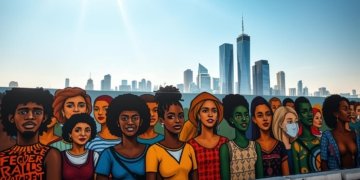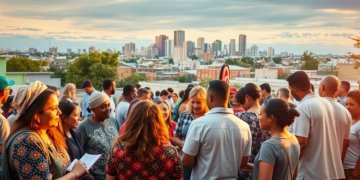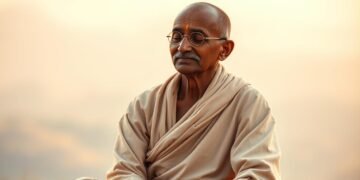What does it take to become the youngest Nobel Peace Prize laureate in history? For Malala Yousafzai, it was a combination of courage, resilience, and an unyielding commitment to education. Born on July 12, 1997, in Mingora, Pakistan, she grew up in a region where the Taliban sought to deny girls their basic right to learn. Yet, even as a young person, she refused to stay silent.
At just 17 years old, Malala made history by becoming the youngest recipient of the Nobel Peace Prize. Her journey began with a simple yet powerful belief: every girl deserves access to quality education. This conviction led her to speak out against oppression, even in the face of life-threatening danger. Her story is not just about one person; it’s a global call to action for equality and empowerment.
This article delves into her inspiring life, her groundbreaking achievements, and her ongoing activism. From her early days in the Swat Valley to her current work with the Malala Fund, her legacy continues to shape the world. Let’s explore how one young year-old girl became a symbol of hope and change.
Key Takeaways
- Malala Yousafzai is the youngest Nobel Peace Prize laureate in history.
- She was born on July 12, 1997, in Mingora, Pakistan.
- Her advocacy focuses on ensuring education for girls worldwide.
- She survived a Taliban assassination attempt at age 15.
- Malala co-founded the Malala Fund to support global education initiatives.
Early Life in the Swat Valley
The Swat Valley, with its rich culture and complex history, played a pivotal role in her upbringing. Nestled in the mountains of Pakistan, this region is known for its breathtaking beauty and deep-rooted traditions. However, it also faced significant challenges, especially when it came to education for girls.
Childhood and Family Background
Born into a traditional Pashtun family, her early life was shaped by strong cultural values and a focus on learning. Her father, a passionate education activist, instilled in her the belief that every child deserves the right to education. Despite limited resources, the family prioritized schooling, ensuring she and her siblings had access to knowledge.
The Influence of Her Father and Early Education
Her father’s dedication to education left a lasting impact on her formative years. He ran a school in the Swat Valley, where she spent much of her childhood. This environment nurtured her love for learning and planted the seeds for her future activism. His work as an advocate for education inspired her to speak out, even as a young girl.
Growing up in the Swat Valley, she witnessed firsthand the struggles many families faced in securing education for their children. These experiences shaped her identity and fueled her determination to fight for the right to education. Her family’s unwavering support played a crucial role in her journey, proving that even in challenging circumstances, change is possible.
Malala Yousafzai: Early Activism and Blogging
At just 11 years old, a young girl from Pakistan began documenting her life under Taliban rule, sparking a global movement for education. This marked the beginning of her public fight for the rights of girls to attend school. Her courage and determination would soon make her a symbol of hope and change.
The BBC Diary and the “Gul Makai” Persona
In 2009, she started writing a diary for BBC Urdu under the pseudonym “Gul Makai.” This name, meaning “cornflower” in Pashto, was chosen to protect her identity. Her entries detailed the daily struggles of living under Taliban rule, including the fear of attending school and the constant threat of violence.
Her writings brought international attention to the plight of girls in the Swat Valley. The media played a crucial role in amplifying her voice, turning her into a global advocate for education. Her father, a passionate activism supporter, encouraged her to speak out despite the risks.
Bold Stance Against Taliban Restrictions
Even as a child, she refused to stay silent. Her diary entries revealed the harsh realities of life under the Taliban, including their ban on girls’ education. Her bravery inspired many in her community and beyond, setting the stage for her transformation from a local person to an international icon.
Her father’s unwavering support was instrumental in her journey. He believed in the power of education and instilled this value in her from a young age. Together, they challenged the oppressive regime, proving that even the youngest voices can spark significant change.
Living Under Taliban Oppression
Life in the Swat Valley took a dark turn as the Taliban imposed harsh restrictions on education and daily activities. Families faced immense challenges, especially those with daughters who dreamed of attending school. The once-thriving community became a place of fear and uncertainty.
Impact on Schooling and Daily Life
The Taliban’s rules disrupted every aspect of life. Girls were banned from attending school, and many families struggled to cope. Classes were suspended, and teachers faced threats if they defied the orders. For young girls, the dream of learning seemed out of reach.
Daily routines were transformed. Fear of violence kept many indoors, and public spaces became unsafe. Families had to make difficult choices to protect their children. The emotional toll was immense, as opportunities for growth and development were stripped away.
Community and Cultural Shifts
The Taliban’s presence led to significant cultural changes. Traditional values were overshadowed by fear and oppression. Many in the community resisted, but the risks were high. Families fought for their children’s right to learn, even in the face of danger.
Despite the challenges, hope persisted. Some families secretly arranged for their daughters to continue their education. These small acts of defiance became symbols of resilience. The Swat Valley, once known for its beauty, became a battleground for the right to knowledge.
The Attack that Changed Her Life
On a quiet October day in 2012, a single act of violence would forever alter the course of a young girl’s life. At just 15 years of age, she was targeted by the Taliban for her unwavering advocacy for girls’ education. The attack not only shocked the world but also marked a turning point in the fight for equal access to learning.
Details of the October 9, 2012 Incident
On October 9, 2012, she was riding a school bus with her classmates when a Taliban gunman boarded and fired a single shot. The bullet struck her in the head and shoulder, leaving her critically injured. Two other girls were also wounded, though their injuries were less severe.
The attack was a direct response to her activism. The Taliban had long opposed her efforts to promote girls’ education, and this act of violence was meant to silence her. Instead, it amplified her message, drawing global attention to the struggles faced by millions of girls denied the right to learn.
Immediate Global Response to the Shooting
The news of the education shot Taliban incident spread rapidly, sparking outrage worldwide. Leaders, activists, and ordinary citizens condemned the attack, calling for justice and renewed efforts to protect girls’ rights. The United Nations declared November 10 as “Malala Day,” a day to focus on the 32 million girls not in school globally.
Her survival and recovery became a symbol of resilience. Despite the attempt to silence her, her voice grew stronger, inspiring a global movement for education. The attack, meant to end her advocacy, instead ignited a fire that continues to burn brightly today.
Medical Recovery and Resilience
The road to recovery after a life-threatening injury is often long and arduous, but it can also reveal incredible strength and determination. For one young activist, the journey through critical surgeries and rehabilitation became a testament to her unwavering spirit.
Critical Treatments and Surgeries
Following the attack, emergency medical work began immediately. She underwent a complex brain surgery to stabilize her condition. The procedure, known as a decompressive craniectomy, was crucial to relieve pressure on her head.
Doctors worked tirelessly to remove the bullet lodged near her brain. The delicate operation required precision and expertise. Her survival was nothing short of miraculous, showcasing the dedication of the medical team.
After initial treatment in Pakistan, she was airlifted to the UK for specialized care. The Queen Elizabeth Hospital in Birmingham, known for treating severe injuries, became her next stop. This transfer marked a turning point in her recovery journey.
Through it all, she emerged as a stronger person. Her resilience in the face of adversity inspired millions. Her story is a powerful reminder of the strength of the human spirit and the importance of fighting for what you believe in.
Her sustained efforts to rebuild her life became a beacon of hope. She proved that even in the darkest moments, determination and courage can lead to remarkable recovery and transformation.
Rise as a Global Icon for Education
Her journey from a small town in Pakistan to the global stage is nothing short of extraordinary. What began as a fight for the right to learn in her community grew into a worldwide movement. Her story became a rallying cry for millions of girls denied access to education.
Her father’s unwavering support played a pivotal role in her rise. He instilled in her the belief that every child deserves the chance to learn. This foundation gave her the courage to speak out, even in the face of immense danger.
Recognition through Awards like the Nobel Peace Prize
In 2014, she made history by becoming the youngest person to receive the Nobel Peace Prize. This honor was a testament to her tireless efforts in advocating for girls’ education. The award not only recognized her work but also amplified her message on a global scale.
Her recognition as a laureate brought renewed attention to the struggles faced by millions of children worldwide. It also highlighted the importance of education as a tool for peace and empowerment. Her story inspired countless others to join the fight for equality.
Speeches at the United Nations and Beyond
Her address at the United Nations in 2013 marked a defining moment in her journey. Standing before world leaders, she declared, “One child, one teacher, one book, and one pen can change the world.” Her words resonated globally, igniting a renewed commitment to education.
She continued to use her platform to advocate for change, speaking at events worldwide. Her speeches emphasized the transformative power of education and the need to protect the right to learn. Her voice became a symbol of hope for millions.
Her birthday, celebrated as Malala Day, serves as a reminder of her ongoing mission. Each year, it renews the call for action and inspires new generations to continue the fight for education.
Establishing the Malala Fund
In 2013, a groundbreaking initiative was launched to transform the future of education for millions of children. The Malala Fund was created to ensure that every child, especially girls, has access to quality learning opportunities. This nonprofit organization became a symbol of hope and resilience, inspired by one young activist’s unwavering commitment to right education.
Vision Behind the Nonprofit Organization
The Malala Fund was born out of a personal story of courage and a family legacy of advocacy. Her father’s dedication to education played a pivotal role in shaping her mission. Together, they envisioned a world where no child is denied the chance to learn, regardless of their circumstances.
The organization focuses on empowering international children, particularly those in conflict zones and refugee camps. Displaced students often face immense challenges, from lack of resources to unsafe environments. The fund works tirelessly to address these barriers, ensuring that every child can attend school and thrive.
One of the fund’s key initiatives is rebuilding school infrastructures in regions affected by war and poverty. By creating safe and accessible learning spaces, the organization aims to restore hope and opportunity for millions of children. This effort is a testament to the power of education in transforming lives and communities.
Through her travels to countries like Kenya, Jordan, and Nigeria, she witnessed firsthand the struggles faced by children in underserved areas. These experiences reinforced her commitment to the Malala Fund’s mission. Her work continues to inspire a global movement for educational equality, proving that one voice can spark lasting change.
Educational Journey and Academic Achievements
From the Swat Valley to Oxford, her path to education was paved with challenges and triumphs. Her journey reflects a relentless pursuit of knowledge and a commitment to the right to learn for all.
At a young age, she attended a local school in Mingora, where her father’s influence nurtured her love for learning. Despite the Taliban’s restrictions, she continued her studies, proving that determination can overcome even the most daunting obstacles.
Her transition to Birmingham marked a turning point. After recovering from the attack, she enrolled in a local school, adapting to a new culture and language. Her resilience as a student shone through, as she balanced her studies with her global advocacy work.
In 2020, she graduated from Oxford University with a degree in Philosophy, Politics, and Economics. This milestone, achieved at the age of 22, was a testament to her work ethic and unwavering focus. Her academic success reinforced the importance of the right to education she had fought for since her early years.
Her achievements also earned her recognition as a national youth leader, inspiring countless others to pursue their dreams. Her story continues to remind the world that education is a powerful tool for change, no matter the challenges one faces.
Impact on Girls’ Education and Global Advocacy
The fight for girls’ education has reshaped global conversations about equality and opportunity. What began as a local struggle has grown into a worldwide movement, inspiring millions to demand the right to learn. This transformation is a testament to the power of one voice and the collective work of countless advocates.
Changing the Narrative for Girls Worldwide
Her activism has redefined how the world views girls’ access to education. By speaking out against gender discrimination, she has empowered millions of young girls to pursue their dreams. Her efforts have shifted cultural norms, proving that education is not just a privilege but a fundamental right.
One of her most significant achievements was winning the children peace prize. This recognition highlighted the importance of education as a tool for peace and development. It also reinforced her role as a global advocate, inspiring others to join the fight for equality.
Empowering Communities Through the Malala Fund
The Malala Fund has been instrumental in bringing tangible change to underserved communities. By supporting local activists and rebuilding schools, the organization ensures that every girl has access to safe and quality learning environments. This work has transformed lives, offering hope and opportunity to those who need it most.
Her travels to countries like Nigeria and Kenya have allowed her to witness firsthand the challenges faced by displaced students. These experiences have strengthened her commitment to the Malala Fund’s mission, proving that education can break cycles of poverty and inequality.
Inspiring Legislative and Cultural Shifts
Her advocacy has influenced policy changes worldwide. For example, in Nigeria, her efforts led to an extension of compulsory education from 9 to 12 years. These legislative shifts are a direct result of her tireless work and the global attention she has brought to the issue.
Over time, her message has resonated with leaders and citizens alike. Her speeches at the United Nations and other global platforms have sparked a renewed commitment to education. This ongoing activism continues to shape policies and inspire future generations.
Her journey as both a student and an advocate serves as a powerful reminder of the transformative power of education. Through her work with the Malala Fund, she has proven that one voice can ignite a movement that changes the world.
Media, Documentaries, and Autobiographical Works
The story of one young activist’s fight for education has been immortalized in books, films, and global media. Her journey from a small town in Pakistan to the world stage has inspired countless works that celebrate her courage and determination. These portrayals have played a decisive role in spreading her message of equality and empowerment.
Exploring Documentaries and the “I Am Malala” Book
One of the most notable portrayals of her life is the documentary “He Named Me Malala.” Directed by Davis Guggenheim, this film delves into her family dynamics, personal experiences, and unwavering activism. It offers an intimate look at the girl stood education movement, showcasing her resilience and the global impact of her work.
Her autobiography, “I Am Malala,” co-written with Christina Lamb, became an international bestseller. The book chronicles her journey from the Swat Valley to becoming a global advocate for education. It highlights her father’s influence and her defiant stance against oppression, earning her the children peace prize and other accolades.
Her appearances in Time magazine further cemented her status as a global icon. Featured twice, she was recognized for her tireless efforts to ensure every child has access to education. These features brought her story to a wider audience, inspiring millions to join the fight for equality.
Her work with the United Nations has also been widely documented. Speeches at global platforms have amplified her message, emphasizing the transformative power of education. Her recognition as the youngest peace prize laureate has further established her legacy as a symbol of hope and change.
Through these works, her name has become synonymous with courage and resilience. Her story continues to inspire future generations, proving that one voice can ignite a movement that changes the world.
Conclusion
From a young age, her fight for education transformed her into a global symbol of resilience and hope. She became youngest Nobel Peace Prize laureate at just 17, setting a benchmark for youth activism. Her journey, marked by the dramatic stood education shot moment, inspired millions to stand up for the right to learn.
Her awards, including the children peace prize, highlight her unwavering commitment to education. Through the Malala Fund, she continues to empower communities, ensuring every child has access to quality schooling. Her story is a testament to the power of one person to ignite global change.
As a beacon of hope, she reminds us that education is a fundamental right. Her legacy as Malala Yousafzai continues to inspire future generations, proving that courage and determination can overcome even the toughest challenges.
FAQ
What is Malala Yousafzai known for?
She is globally recognized for her advocacy for girls’ education and her resilience after surviving a Taliban attack. She became the youngest Nobel Peace Prize laureate in 2014.
Where was Malala Yousafzai born?
She was born on July 12, 1997, in the Swat Valley region of Pakistan, an area once heavily influenced by the Taliban.
How did Malala Yousafzai start her activism?
She began by writing a blog for the BBC under the pseudonym “Gul Makai,” highlighting the challenges girls faced in accessing education under Taliban rule.
What happened on October 9, 2012?
Malala was shot in the head by a Taliban gunman while riding a school bus. The attack drew international outrage and support for her cause.
What is the Malala Fund?
Founded in 2013, the Malala Fund is a nonprofit organization dedicated to ensuring every girl has access to 12 years of free, safe, and quality education.
What awards has Malala Yousafzai received?
She has received numerous awards, including the Nobel Peace Prize, the International Children’s Peace Prize, and the National Youth Peace Prize.
How did Malala recover after the attack?
She underwent critical surgeries in Pakistan and the UK, eventually making a full recovery and continuing her activism on a global scale.
What role did her father play in her activism?
Her father, Ziauddin Yousafzai, a passionate educator, inspired her to stand up for education and supported her advocacy efforts from the beginning.
What is Malala’s educational background?
After recovering, she attended school in the UK and later graduated from the University of Oxford with a degree in Philosophy, Politics, and Economics.
How has Malala impacted global education?
Through her speeches, activism, and the Malala Fund, she has amplified the importance of girls’ education, influencing policies and inspiring millions worldwide.
What is the significance of her book "I Am Malala"?
The autobiography details her life, the attack, and her journey as an advocate for education, offering a powerful narrative of courage and resilience.














